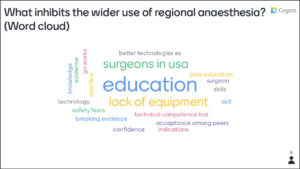Expert opinions on emerging trends in regional anaesthesia in Europe
The inaugural meeting of the European Regional Anaesthesia Advisory Board
Introduction
BD is partnering with a group of 7 experts from across Europe in the field of regional anaesthesia. The remit of this group of experts will be to share experiences and expertise to advance the use of regional anaesthesia (RA) in hospital practice and providing insights into future opportunities in RA. This expert group will generate best practice advice, publications and other educational materials to share the outcomes of the meeting over the next 2 years.
The members of this expert group are:
- Arjan Konijn, Anaesthesiologist, University Medical Centre, Groningen, Netherlands
- Cesar Aldecoa, Head of Anaesthesia Department, University Hospital Rio Hortega, Spain
- Dan Benhamou, Chair, Department of Anaesthesia and Intensive Care Medicine, AP-HP Universite Paris, France
- Laura Mitchell, Anaesthetic Nurse, Nottingham University Hospitals, UK
- Paul Kessler, Scientific member of the Clinic of Anaesthesiology, Intensive Care Medicine and Pain Therapy of the University Clinic, Frankfurt, Germany
- Peter Marhofer, Executive Managing Physician at the Department of Anaesthesia, General Intensive Care Medicine and Pain Control, Medical University of Vienna, Austria
- Vedran Frković, Senior Consultant in Anaesthesiology, Linköping University Hospital, Sweden
Proceedings of the inaugural meeting
The inaugural meeting saw the key advisors sharing, robustly and engagingly, their perceptions of the direction of travel of European anaesthesia practices. The focus was on emerging trends in regional anaesthesia (RA) indicating that there are increasing opportunities for regional anaesthesia particularly with Peripheral Nerve Blocks (PNB).
When asked what was inhibiting the wider use of regional anaesthesia, the advisors indicated that education was an important requirement, both for anaesthetists and surgeons.


The advisory board also provided their insights into the introduction of the ISO-80369-61 NRFit™standards. These are specifically designed to prevent accidental misconnection in anaesthesia, which can lead to serious consequences like paraplegia and even death.2
The members of the advisory board opined that the NRFit™ standards were needed ‘to avoid potentially fatal but easily preventable complications, to provide assurance for the patient and the hospital’. The push to adopt methods to improve the safety of connectors is strong and primarily coming from various societies and associations, despite barriers and arguments promoting the need for a greater evidence base. This was summarised by one of the delegates who said, ‘We cannot stop the train’.


In the future, the members of the advisory board will consider and discuss the key recommendations made in the inaugural meeting. The next meeting of the board will be held in 2021.
#BD Regional Anaesthesia Clinical Advisory Board #device incompatibility #epidural anaesthesia #ISO 80369 #ISO 80369-6 #Luer devices #nrfit #small-bore connector incompatibility #spinal anaesthesia
References
1: ISO 80369-6:2016(en) Small-bore connectors for liquids and gases in healthcare applications — Part 6: Connectors for neuraxial applications. https://www.iso.org/standard/50734.html
2: Chotsampancharoen T, Sripornsawan P, Wongchanchailert M. Two fatal cases of accidental intrathecal vincristine administration: learning from death events. Chemotherapy. 2016;61(2):108-110. doi: 10.1159/000441380
Approbation number: BD-21699




